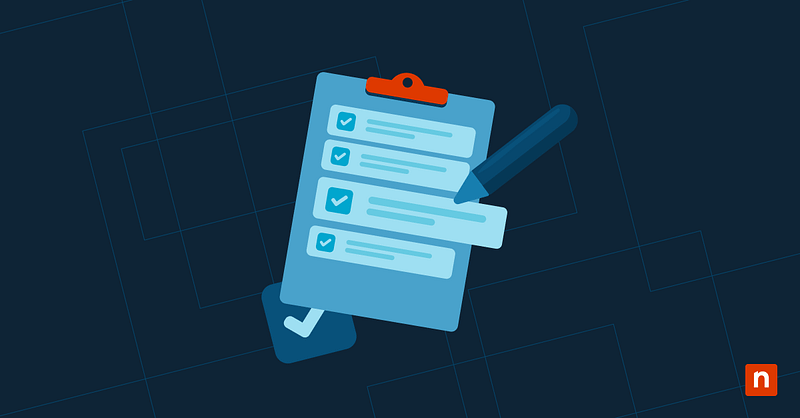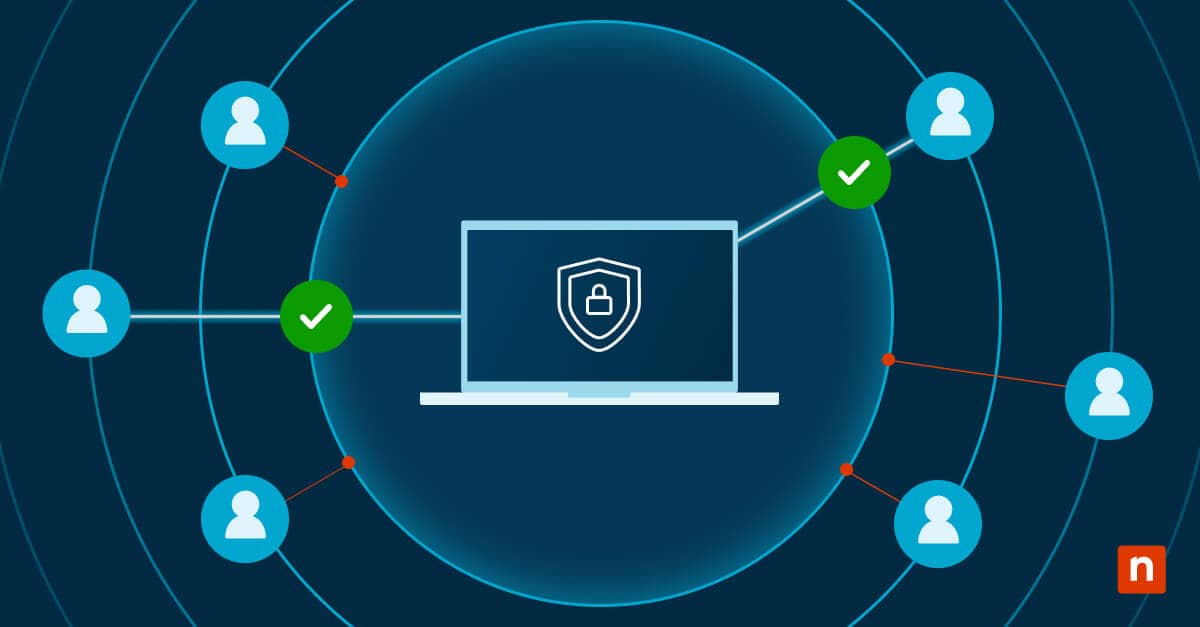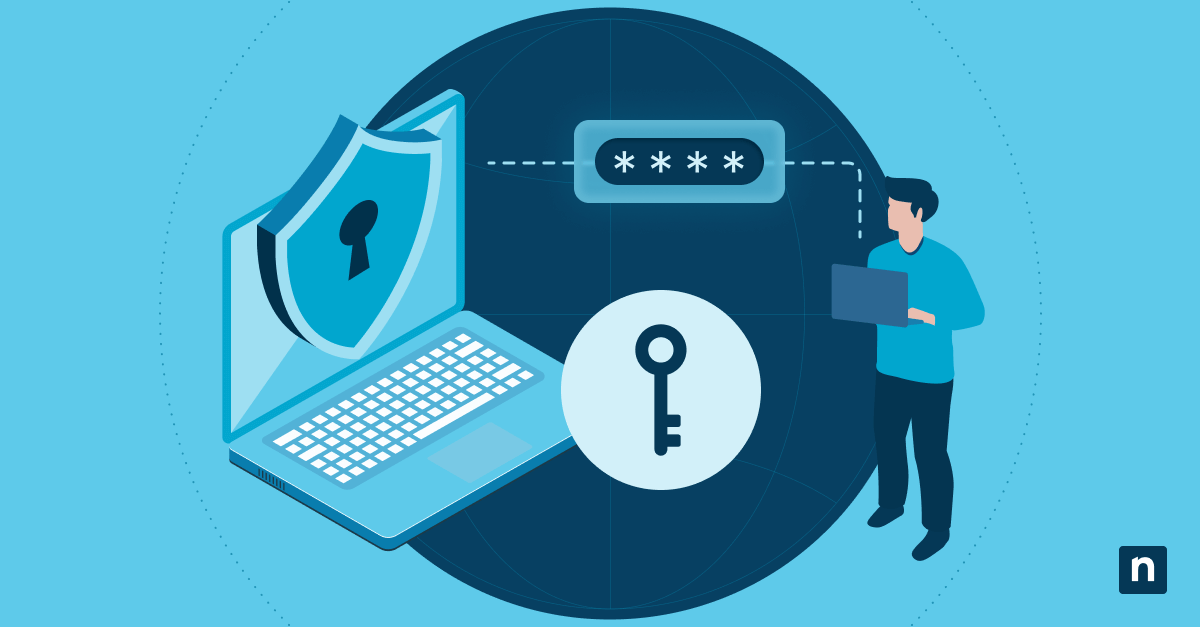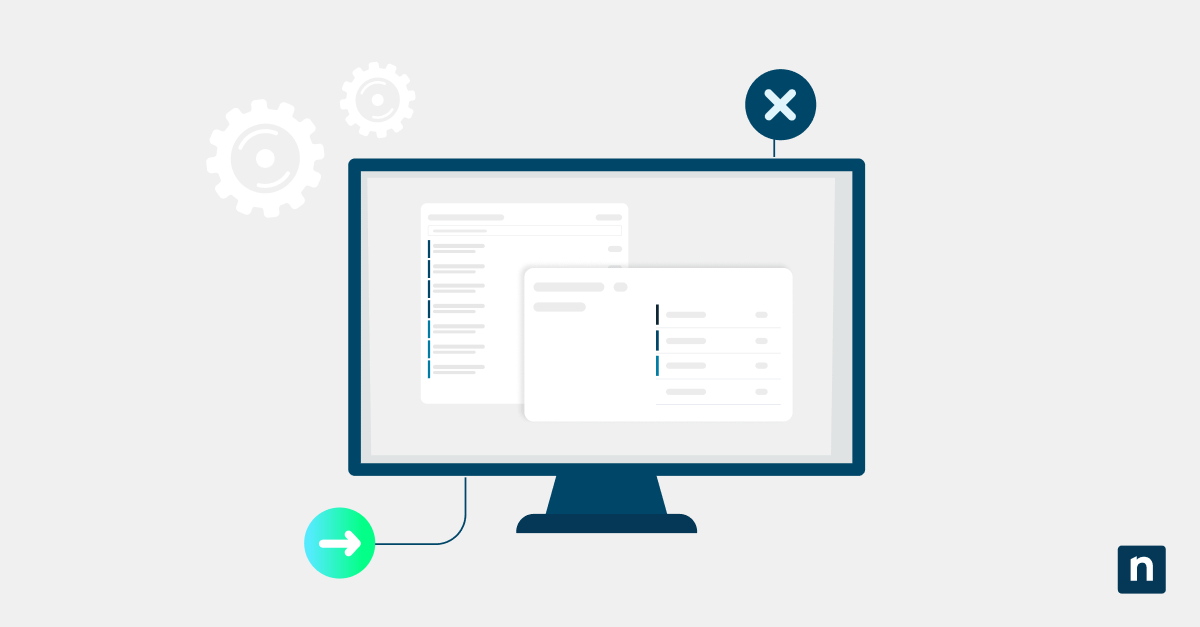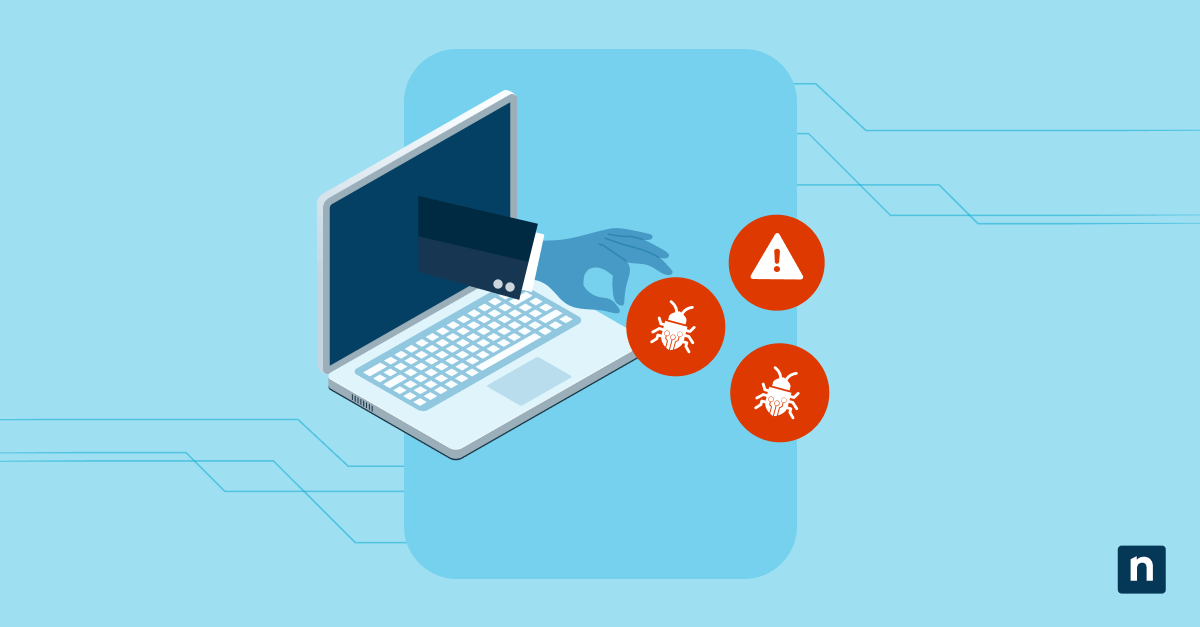Key points
- IT compliance definition: IT compliance ensures organizations meet legal, regulatory, and industry standards to protect sensitive data, reduce cyber risks, and maintain customer trust.
- Core components: Successful IT compliance integrates IT governance (risk management, alignment with business goals, adherence to frameworks like HIPAA, GDPR, SOC 2) and IT security compliance (access controls, zero-trust, employee training).
- Compliance vs. security: IT compliance = meeting external regulations; IT security = proactively protecting data and systems from cyber threats.
- Major IT compliance standards:
- HIPAA: U.S. healthcare: patient data safeguards, audit controls
- GDPR: EU: data privacy, consent, 72-hour breach notifications
- PIPEDA: Canada: personal data protection for commercial use
- PCI DSS: Payment card data: encryption, segmentation, scanning
- SOX: Financial reporting integrity for U.S. public companies
- ISO 27001: International ISMS framework, continuous improvement
- SOC 2: Service providers: security, availability, confidentiality, privacy, integrity
- NIS2: EU critical infrastructure: incident reporting, supply chain security
- GLBA: U.S. financial institutions: consumer privacy and data safeguards
- Benefits of IT compliance:
- Stronger cybersecurity posture
- Protection of sensitive data
- Streamlined IT processes
- Improved reputation
- Avoidance of fines
- Business continuity
- Implementation checklist:
- Identify applicable regulations
- Conduct risk assessments
- Perform gap analysis
- Implement access controls
- Create IT security plans
- Ensure backup and resiliency
- Automate compliance monitoring
- Continuous improvement
- Risks of noncompliance:
- Data breaches
- Legal consequences (e.g., HIPAA fines, PCI DSS penalties, SOC 2 vendor loss)
- Financial penalties
- Reputational damage
- Downtime
- Customer loss
- Best practices:
- Establish a compliance management system
- Automate IT operations (e.g., patch management, policy-as-code)
- Conduct regular audits and monitoring
- Provide ongoing compliance training and awareness.
The IT compliance landscape is changing as governments address rising data security risks. As a result, organizations must stay on top of their risk management and security procedures to ensure compliance with new laws and requirements. Aside from these general regulations, organizations operating in more tightly regulated industries need to be aware of additional compliance requirements.
What is IT compliance?
IT compliance refers to observing legal and practical rules or standards designed to keep data and sensitive information secure. Because data is shared throughout organizations, all departments must practice compliance and implement a cohesive strategy to meet IT compliance requirements.
Achieve compliance with regulatory standards by implementing compliance management practices.
What are the components of IT compliance?
There are two important elements of IT compliance which are IT governance and IT security. Here’s the breakdown:
- IT governance: The IT compliance components that aims to align the capabilities of the IT team with the organization’s security needs and strategic goals. As this relates to compliance, the IT team must balance regulatory requirements with the organization’s strategy and the resources available to accomplish that.
- Risk management: It teams must understand that risk assessment and mitigation strategies is essential for IT teams. Regulations require companies to protect consumer data, so organizations need to identify and appropriately prioritize vulnerabilities to comply. Organizations should also create disaster recovery plans to minimize the amount of data at risk if a security incident occurs.
- Regulatory standards: IT teams need to be aware of major regulatory frameworks, such as HIPAA and SOC2, and the more general legal requirements established by the GDPR in Europe and the CCPA in California, for example. HIPAA applies to medical providers handling sensitive patient information, and SOC2 typically applies to service providers that contact private consumer information.
- IT security compliance: IT teams must ensure that employees follow internal compliance regulations. Many security incidents are caused by human error, so managing access and establishing a zero-trust environment are two important steps to ensure compliance with protocols.
IT compliance vs IT security
IT compliance ensures your IT systems meet specific legal, regulatory, and industry standards. On the other hand, IT security is about protecting your organization’s data and systems from unauthorized access and other types of cyber attacks. While IT compliance aims to meet external requirements, IT security encompasses a broader scope and focuses on proactive mitigation of potential risks. Here’s an overview of the comparison:
Types of IT compliance standards
At a glance:
| Standard | Scope | Key Requirements |
| HIPAA | U.S. healthcare industry | Safeguards for patient health information (PHI), audit controls, privacy and security rules |
| GDPR | Applies to any company processing EU citizen data | Consent management, data minimization, right to be forgotten, 72-hour breach notifications |
| PIPEDA | Canadian organizations handling personal information for commercial use | Lawful consent, limited data use, safeguarding personal information, access and correction rights |
| PCI DSS | Organizations handling credit card data | Network segmentation, strong encryption, vulnerability scanning, regular compliance assessments |
| SOX(Sarbanes-Oxley Act) | U.S. publicly traded companies | Accurate financial reporting, internal controls, IT and access management for financial systems |
| ISO 27001 | International standard for information security management | Risk management framework, continuous improvement cycle, ISMS (Information Security Management System) |
| SOC 2 | Service providers storing or processing customer data | Trust Service Criteria: security, availability, processing integrity, confidentiality, privacy |
| NIS2 | Applies to essential and important entities across the EU (e.g., energy, transport, healthcare, digital infrastructure) | Incident reporting within 24 hours, supply chain security, business continuity, risk management measures |
| GLBA | U.S. financial institutions | Safeguards Rule for data security, privacy notices to consumers, restrictions on sharing financial data |
Compliance standards vary across states and countries, but most have some common requirements. The regulations generally require companies to provide or delete data at the consumer’s request to keep consumers in control of their own data. Here are the types of compliance standards and their coverage:
1. HIPAA (Health Insurance Portability and Accountability Act)
HIPAA establishes standards for protecting sensitive patient health information, such as medical histories. This standard typically applies to healthcare organizations such as hospitals, health insurance providers, and any other business that handles patient information. HIPAA compliance reduces the risk of data breaches and ensures that patients’ data remains confidential and secure.
→ Read NinjaOne’s more in-depth overview of HIPAA
2. GDPR (General Data Protection Regulation)
GDPR is a European regulation designed to protect the personal data and privacy of individuals within the European Union (EU) and European Economic Area (EEA). It also governs the export of personal data outside these areas. Any organization that processes or stores the personal data of EU citizens, even if the organization itself is based outside of the EU. To comply, organizations need clear policies on data collection, access, storage, and sharing, as well as transparent user consent mechanisms and incident response plans.
→ Check out NinjaOne’s comprehensive guide to GDPR compliance
3. The Personal Information Protection and Electronic Documents Act (PIPEDA)
The PIPEDA is a Canadian compliance standard that governs how private organizations collect, use, and share personal information, similar to the EU’s GDPR. It applies to Canadian businesses across industries and global organizations that handle any personal data of Canadians.
4. PCI DSS (Payment Card Industry Data Security Standard)
PCI DSS ensures that any organization handling payment card information ensures secure payment transactions and the protection of sensitive financial information. This applies to businesses involved in processing, storing, or transmitting payment card data, from financial institutions to e-commerce vendors. Non-compliance could lead to fines and even potential revocation of payment processing capabilities.
5. Sarbanes-Oxley Act (SOX)
SOX is a US federal law that aims to increase transparency in corporate financial reporting and prevent fraud. While it primarily targets publicly traded companies, SOX has significant implications for IT departments, especially regarding data accuracy and integrity. SOX compliance is a legal requirement for businesses under its scope.
6. ISO 27001 (International Organization for Standardization – Information Security Management)
ISO compliance outlines best practices for establishing, implementing, maintaining, and continually improving an information security management system. Organizations that want to improve or confirm their information security processes should learn. An ISO 27001 certification signifies robust security protocols, which can act as a strong indicator of reliability for businesses that want to stand out in competitive markets.
→ Learn more about ISO Compliance or how to be ISO certified
7. SOC 2 (System and Organization Controls 2)
SOC 2 is an IT compliance standard that applies to service providers who manage customer data. such as SaaS providers, data centers, and managed service providers (MSPs). This compliance standard assesses how an organization’s IT infrastructure meets the standard’s five core principles: security, availability, processing integrity, confidentiality, and privacy. SOC 2 compliance boosts a business’s credibility and may be required to meet some vendor requirements.
→ Check out NinjaOne’s full overview of SOC 2 compliance implementation
8. Network & Information Security Directive (NIS2)
The NIS2 Directive is a cybersecurity compliance standard. It focuses on ensuring resiliency and business continuity for essential sectors such as energy, transport, banking, healthcare, and digital infrastructure in the EU. Designed to enhance the existing Network and Information Systems Directive, NIS2 requires IT security measures such as remote monitoring, access control, and regular compliance audits to protect critical infrastructure and sensitive information.
9. Gramm–Leach–Bliley Act (GLBA)
The GLBA focuses on financial institutions and mandates the secure handling of customers’ private financial data. Enacted in 1999, this law safeguards consumer privacy while promoting accountability. IT professionals in the financial sector need to meet the GLBA’s core requirements, which IT must enable and enforce effectively. These include implementing data security tools, preventing unauthorized access to customer data, and implementing practices to prevent data breaches due to cyberattacks.
→ Here’s NinjaOne’s detailed guide to GLBA compliance
Benefits of IT compliance
For IT professionals, IT compliance isn’t just about adhering to regulatory requirements; it also offers organizations many advantages.
- Protecting sensitive data and systems
Meeting compliance requirements ensures that sensitive data is stored, processed, and accessed securely. Remaining compliant with industry standards reduces the chances of costly data breaches and cybercriminals gaining unauthorized access.
- Ensuring a strong security posture
Many compliance requirements overlap with security best practices. Meeting IT compliance standards often means that an IT team utilizes robust security tools, such as full disk encryption, remote monitoring, or role-based access control, which further strengthenfurther strengthenings an organization’s overall cybersecurity posture.
- Improving and streamlining IT processes
Compliance audits and routine compliance management give IT teams and organizational decision-makers more insight into making more informed decisions about improving IT operations. IT compliance enables IT teams to establish clear processes for data handling, device security, and system oversight, which ultimately boosts efficiency.
- Building a trustworthy reputation
Organizations that prioritize compliance can receive official certifications from regulatory bodies, adding legitimacy to a security-first reputation. Customers, stakeholders, and regulators tend to view compliant organizations as more reliable and responsible, giving them an edge over the competition.
- Preventing financial penalties
Failure to comply with regulations can result in penalties, typically in the form of fines. For example, non-compliance with PCI DSS in payment processing could lead to penalties costing thousands in fines.
How to implement IT compliance: A checklist
To effectively implement IT compliance, here’s a helpful checklist you can use to establish and maintain industry regulations within any organization:
1. Identify applicable regulations
Pin down the regulations relevant to your organization, such as GDPR, HIPAA, or PCI DSS. This depends on factors such as your industry, location, and the types of data you manage. Keep track of any changes or updates from regulatory bodies on these standards.
Actions include:
- Holding a meeting with the legal, security, product, and sales teams to determine where you store/process regulated data (by region, by customer type).
- Curation of a compliance scope documentation that covers applicable standards the organization needs to comply with, and the reason for the inclusion of each regulation.
- Release of data map/asset inventory (who owns it, where it lives, and sensitivity).
2. Risk assessment
Understand the threats, likelihood, and impact against the scoped assets. Actions include:
- Asset inventory based on the data map/set produced, ideally supported by an IT Asset Management (ITAM) system to ensure completeness and accuracy.
- Usage of consistent risk methodology (likelihood x impact).
- Threat modeling for high-value assets.
- Vulnerability scans and penetration tests.
3. Conduct a gap analysis
Compare your current IT processes and systems against the regulatory standards you need to meet to identify areas of improvement.
Actions include:
- Mapping of each regulation requirement to existing controls.
- Running a formal gap analysis (control = present / partially present / absent).
- Capturing of evidence samples for each control.
- Forming a remediation plan.
4. Implement access controls
Use access control tools, from multi-factor authentication to full disk encryption, to prevent data breaches and unauthorized access to sensitive data.
Actions include:
- Building a control catalog that lists each control (technical, administrative, physical), owner, frequency, and evidence type (logs, screenshots, policies).
- Defining policy, procedure, tools needed, and evidence collection method for each control.
5. Create IT security plans
Establish clear policies for data handling, device management, and user access, and ensure employees understand their role in maintaining compliance. Incident response plans should also be created to ensure business continuity and minimize downtime.
6. Ensure data resiliency
Safeguard sensitive data from ransomware and other cyber attacks by utilizing backup software. The best backup software ensures redundancy and rapid data restoration following a disaster or attack.
7. Automate IT operations
Use IT automation tools to reduce the chance of human error and to improve efficiency with IT processes. For example:
- IT teams can automate the detection and patching of vulnerabilities with patch management software.
- Automating evidence collection, where possible, such as policy-as-code implementation (to let you codify desired states and automatically flag drift), configuration scans, and continuous compliance checks.
Risks associated with IT noncompliance
Ensuring compliance with industry regulations can be tedious and may take a lot of effort to attain. However, consequences for IT noncompliance can bring greater disadvantages. Here are some risks organizations need to recognize:
- Security and financial risks
Noncompliant organizations risk security breaches, data corruption, and theft. Unfortunately, these could lead to disruptive and, most of the time, destructive consequences, including high recovery spending and costly fines. Organizations are also at risk of reputational damage, which can be hard to recover from due to its almost-irreversible nature.
- Challenges due to infrastructure complexity
Many companies are shifting from traditional, locally-based hardware infrastructures to cloud or hybrid infrastructures, which adds complexity to the security environment and increases potential vulnerabilities. This makes compliance more difficult to achieve, further increasing risk.
- Risks associated with IT compliance
Some organizations also need to consider regulations like HIPAA and SOC2 compliance. They are designed to provide additional consumer protections.
A data breach can result in severe consequences, including patient identity theft. Compliance violators could spend up to a year in prison and receive fines up to $50,000. Not meeting industry standards for these two may cost an organization hefty fines, legal penalties, and lasting damage to customer trust.
1. HIPAA
Medical practices must carefully follow HIPAA regulations to ensure no privileged information falls into the wrong hands.
A data breach can result in severe consequences, including patient identity theft. Compliance violators could spend up to a year in prison and receive fines up to $50,000.
2. SOC 2
Consumers often require SOC2 compliance to ensure data privacy. While it is not a legal requirement and thus does not risk fines or prison time, keeping customers’ data secure is essential for business continuity and ongoing success. A company that allows customer data to be exposed or stolen risks reputational damage, customer and revenue loss, and expensive downtime.
Best practices in IT compliance
Keeping your organizations compliant all the time may seem daunting, but as regulations become more strict, it’s essential for continued operation. Here are some best practices organizations should follow to begin improving their security posture:
- Establish an IT compliance management system: This compliance management system should contain all of an organization’s policies and documentation pertaining to compliance. Regular penetration testing, continuous monitoring, and frequent checking for new standards are all important parts of managing compliance.
- Continuous monitoring and improvement: Monitoring programs are an important part of the compliance management system, and automated monitoring solutions are ideal for maximum visibility into user activity and data access. The resulting visibility and documentation will be invaluable if the organization ever be audited. Once IT teams have brought the organization into compliance, there should be continued fine-tuning.
- Compliance training and awareness: The importance of training staff on compliance procedures cannot be overstated. The majority of data breaches are caused by human error, often employee negligence. Training is essential to decrease the risk of social engineering, phishing, and compromised credential attacks.
Centralize all the IT tools you need for IT compliance with NinjaOne’s single pane of glass view.
The importance of IT compliance
Compliance has a role in data protection, regulatory adherence, and risk management. By attending to regulatory requirements, organizations naturally improve their security posture, enabling them to protect themselves and their data from attack. This affects more than just the IT team. When the organization meets compliance requirements, it decreases its risk of incurring fines and losing customers and revenue.
Prioritizing IT compliance increases the likelihood of long-term success. While it may be tempting for leaders to ignore compliance and prioritize other issues, a single security incident could cost millions of dollars, plus the fines for failing to comply with regulations or legal fees from lawsuits brought by customers. Consider utilizing IT security software like NinjaOne to reduce the risk of attacks and data breaches.
NinjaOne’s IT security solution consolidates the tools IT teams need to strengthen their security posture and comply with regulatory standards. Features like encryption, automated patch management, and backup software can be viewed and managed from a single dashboard. This saves administrators time spent switching between tools, streamlining operations. See how you can boost IT efficiency with NinjaOne’s comprehensive suite of It management tools. Sign up to try NinjaOne for free for 14 days.

